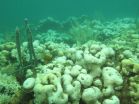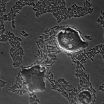(Press-News.org) A new study in mice, conducted by researchers at Sweden's Karolinska Institutet together with colleagues in Singapore and the United States, shows that our natural gut-residing microbes can influence the integrity of the blood-brain barrier, which protects the brain from harmful substances in the blood. According to the authors, the findings provide experimental evidence that our indigenous microbes contribute to the mechanism that closes the blood-brain barrier before birth. The results also support previous observations that gut microbiota can impact brain development and function.
The blood-brain barrier is a highly selective barrier that prevents unwanted molecules and cells from entering the brain from the bloodstream. In the current study, being published in the journal Science Translational Medicine, the international interdisciplinary research team demonstrates that the transport of molecules across the blood-brain barrier can be modulated by gut microbes - which therefore play an important role in the protection of the brain.
The investigators reached this conclusion by comparing the integrity and development of the blood-brain barrier between two groups of mice: the first group was raised in an environment where they were exposed to normal bacteria, and the second (called germ-free mice) was kept in a sterile environment without any bacteria.
"We showed that the presence of the maternal gut microbiota during late pregnancy blocked the passage of labeled antibodies from the circulation into the brain parenchyma of the growing fetus", says first author Dr. Viorica Braniste at the Department of Microbiology, Tumor and Cell Biology at Karolinska Institutet. "In contrast, in age-matched fetuses from germ-free mothers, these labeled antibodies easily crossed the blood-brain barrier and was detected within the brain parenchyma".
The team also showed that the increased 'leakiness' of the blood-brain barrier, observed in germ-free mice from early life, was maintained into adulthood. Interestingly, this 'leakiness' could be abrogated if the mice were exposed to fecal transplantation of normal gut microbes. The precise molecular mechanisms remain to be identified. However, the team was able to show that so-called tight junction proteins, which are known to be important for the blood-brain barrier permeability, did undergo structural changes and had altered levels of expression in the absence of bacteria.
According to the researchers, the findings provide experimental evidence that alterations of our indigenous microbiota may have far-reaching consequences for the blood-brain barrier function throughout life.
"These findings further underscore the importance of the maternal microbes during early life and that our bacteria are an integrated component of our body physiology", says Professor Sven Pettersson, the principal investigator at the Department of Microbiology, Tumor and Cell Biology. "Given that the microbiome composition and diversity change over time, it is tempting to speculate that the blood-brain barrier integrity also may fluctuate depending on the microbiome. This knowledge may be used to develop new ways for opening the blood-brain-barrier to increase the efficacy of the brain cancer drugs and for the design of treatment regimes that strengthens the integrity of the blood-brain barrier".
INFORMATION:
The study was funded with grants from the Swedish Research Council, the Swedish Brain Foundation, the research consortium TORNADO within the EU's Seventh Framework Programme, Merieux Foundation, Wenner-Gren Foundation, Singapore Millenium foundation, and the Nanyang Technological University in Singapore. Professor Sven Pettersson is also affiliated to the Lee Kong Chian School of Medicine, The National Cancer Centre in Singapore and the Singapore Centre on Environmental Life Sciences Engineering at NTU.
Publication: 'The gut microbiota influences the blood brain barrier permeability in mice', Viorica Braniste, Maha Al-Asmakh, Czeslawa Kowa, Farhana Anuar, Afrouz Abbaspour, Miklos Toth, Agata Korecka, Nadja Bakocevic, Ng Lai Guan, Parag Kundu, Balazs Gulyas, Christer Halldin, Kjell Hultenby, Harriet Nilsson, Hans Hebert, Bruce T. Volpe, Betty Diamond, Sven Pettersson, Science Translational Medicine, online 19th November 2014.
LA JOLLA--Scientists at the Salk Institute have discovered a powerful one-two punch for countering a common genetic mutation that often leads to drug-resistant cancers. The dual-drug therapy--with analogs already in use for other diseases--doubled the survival rate of mice with lung cancer and halted cancer in pancreatic cells.
Lung cancer, which affects nonsmokers as well as smokers, is the most common cancer worldwide, causing 1.6 million deaths a year, far more than pancreatic, breast and colon cancer combined. About 30 percent of the most common type of lung cancer ...
WASHINGTON, D.C. - An antidepressant commonly prescribed for women with postpartum depression may restore connections between cells in brain regions that are negatively affected by chronic stress during pregnancy, new research suggests.
Ohio State University scientists found that rats that had been chronically stressed during pregnancy showed depressive-like behaviors after giving birth, and structures in certain areas of their brains were less complex than in unstressed rats. After receiving the drug for three weeks, these rats had no depressive symptoms and neurons ...
New York City residents' movement around the city was perturbed, but resumed less than 24-hours after Hurricane Sandy, according to a study published November 19, 2014 in the open-access journal PLOS ONE by Qi Wang and John Taylor from Virginia Tech.
Tropical cyclones, including hurricanes and typhoons, are severe natural disasters that can cause tremendous loss of human life and suffering. Our knowledge of peoples' movements during natural disasters is so far limited due to a lack of data. The authors of this article studied human mobility using movement data from individuals ...
CORVALLIS, Ore. - Engineers have created a new way to use lidar technology to identify and classify landslides on a landscape scale, which may revolutionize the understanding of landslides in the U.S. and reveal them to be far more common and hazardous than often understood.
The new, non-subjective technology, created by researchers at Oregon State University and George Mason University, can analyze and classify the landslide risk in an area of 50 or more square miles in about 30 minutes - a task that previously might have taken an expert several weeks to months. It can ...
TALLAHASSEE, Fla. -- A new study by a Florida State University biologist shows that bleaching events brought on by rising sea temperatures are having a detrimental long-term impact on coral.
Professor Don Levitan, chair of the Department of Biological Science, writes in the latest issue of Marine Ecology Progress Series that bleaching -- a process where high water temperatures or UV light stresses the coral to the point where it loses its symbiotic algal partner that provides the coral with color -- is also affecting the long-term fertility of the coral.
"Even corals ...
New research has found that one of the world's most prolific bacteria manages to afflict humans, animals and even plants by way of a mechanism not before seen in any infectious microorganism -- a sense of touch. This unique ability helps make the bacteria Pseudomonas aeruginosa ubiquitous, but it also might leave these antibiotic-resistant organisms vulnerable to a new form of treatment.
Pseudomonas is the first pathogen found to initiate infection after merely attaching to the surface of a host, Princeton University and Dartmouth College researchers report in the journal ...
A social sensing game created at Illinois allows researchers to study natural interactions between children, collect large amounts of data about those interactions and test theories about youth aggression and victimization.
The game's behavior analyses effectively identify classroom bullies, even revealing peer aggression that goes undetected by traditional research methods, the researchers say.
The game's developers say it is an improvement over traditional research methods, such as questionnaires, which do not assess interactions between youth in real time.
"What ...
When the mouse and human genomes were catalogued more than 10 years ago, an international team of researchers set out to understand and compare the "mission control centers" found throughout the large stretches of DNA flanking the genes. Their long-awaited report, published Nov. 19 in the journal Nature suggests why studies in mice cannot always be reproduced in humans. Importantly, the scientists say, their work also sheds light on the function of DNA's regulatory regions, which are often to blame for common chronic human diseases.
"Most of the differences between mice ...
Microbiologists at NYU Langone Medical Center say they have what may be the first strong evidence that the natural presence of viruses in the gut -- or what they call the 'virome' -- plays a health-maintenance and infection-fighting role similar to that of the intestinal bacteria that dwell there and make up the "microbiome."
In a series of experiments in mice that took two years to complete, the NYU Langone team found that infection with the common murine norovirus, or MNV, helped mice repair intestinal tissue damaged by inflammation and helped restore the gut's immune ...
For years, scientists have considered the laboratory mouse one of the best models for researching disease in humans because of the genetic similarity between the two mammals. Now, researchers at the Stanford University School of Medicine have found that the basic principles of how genes are controlled are similar in the two species, validating the mouse's utility in clinical research.
However, there are important differences in the details of gene regulation that distinguish us as a species.
"At the end of the day, a lot of the genes are identical between a mouse and ...






